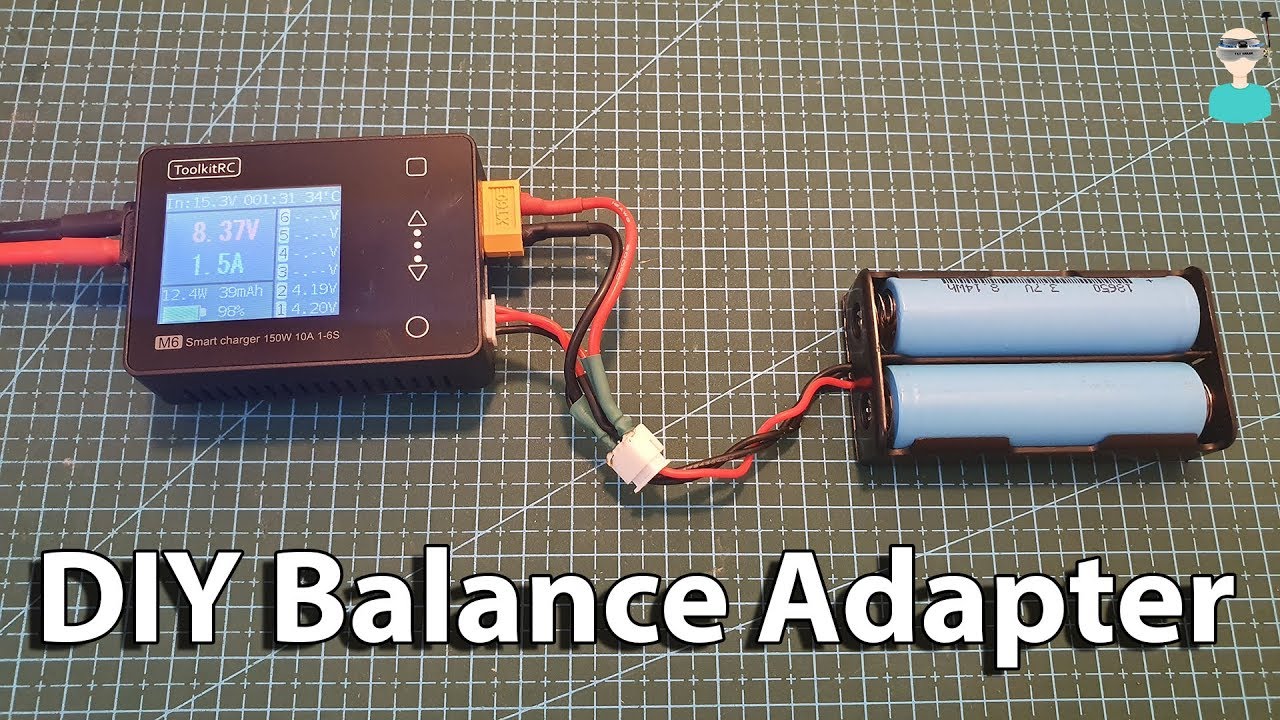Balancing 18650 batteries might sound complicated, but it’s actually pretty straightforward once you understand the basics.
Here’s the thing:
When you connect multiple 18650 cells together (especially in series), they need to be balanced. Otherwise, you’re looking at reduced capacity, shorter lifespan, and potential safety issues.
In this guide, as a professional 18650 battery pack manufacturer, I’ll show you exactly how to balance 18650 batteries using proven methods that actually work.
Let’s dive in.

What Are 18650 Batteries (And Why Balance Them)?
First things first.
18650 batteries are lithium-ion cells that measure 18mm x 65mm. They’re the workhorses behind everything from laptops to electric vehicles.
But here’s where it gets interesting:
When you connect multiple cells in series to create a battery pack, each cell can have slightly different characteristics. Even cells from the same batch.
These differences compound over time.
For example, one cell might charge to 4.15V while another hits 4.25V. That 0.1V difference? It’s enough to cause serious problems.
Without proper balancing, you’ll experience:
- Reduced capacity (your pack performs like its weakest cell)
- Premature aging (some cells wear out faster than others)
- Safety risks (overcharged cells can enter thermal runaway)
That’s why cell balancing is non-negotiable for any serious battery pack build.
The Two Main Balancing Methods That Actually Work
When it comes to battery balancing, you’ve got two main options: passive and active.
Let me break down each method.
Passive Balancing: Simple But Effective
Passive balancing is like the Honda Civic of balancing methods. It’s reliable, affordable, and gets the job done.
Here’s how it works:
During charging, a battery management system monitors each cell’s voltage. When a cell reaches a set threshold (usually around 4.15V), the BMS activates a small resistor across that cell.
This resistor “bleeds off” excess energy as heat, slowing down that cell’s charging rate.
Meanwhile, the other cells continue charging until they catch up.
Pros:
- Dead simple to implement
- Inexpensive components
- Proven reliability
Cons:
- Wastes energy as heat
- Only works during charging
- Slower than active methods
I’ve found passive balancing works great for smaller packs (under 10 cells) where efficiency isn’t critical.
Active Balancing: The High-Performance Option
Active balancing is the Tesla of balancing methods. More sophisticated, more efficient, but also more complex.
Instead of wasting energy, active systems transfer charge from higher cells to lower ones.
Think of it like Robin Hood for batteries.
The system uses capacitors, inductors, or even tiny DC-DC converters to shuttle energy between cells. This happens during both charging AND discharging.
Pros:
- Highly efficient (minimal energy waste)
- Works continuously
- Faster balancing
- Extends pack runtime
Cons:
- More expensive
- Complex circuitry
- More potential failure points
For large packs or mission-critical applications, active balancing is worth the investment.
How to Balance Your 18650 Pack: Step-by-Step
Now for the practical stuff.
Here’s exactly how to balance your 18650 batteries, whether you’re building a new pack or maintaining an existing one.
Step 1: Start With Matched Cells
This is crucial:
Before you even think about assembling your pack, you need to match your cells.
Use a multimeter to check each cell’s voltage. Group cells that are within 0.05V of each other.
For example:
- Group A: 3.65V – 3.70V
- Group B: 3.70V – 3.75V
- Group C: 3.75V – 3.80V
Pro tip: If you’re serious about this, invest in a cell tester that measures internal resistance too. Cells with similar resistance values will stay balanced longer.
Step 2: Pre-Balance Before Assembly
Here’s what most people skip (and regret later):
Charge all your cells to exactly the same voltage before connecting them.
I recommend charging to 3.7V for storage or 4.1V if you’re assembling immediately.
Use a quality single-cell charger and double-check each cell with your multimeter.
This gives your BMS a huge head start.
Step 3: Install a Quality BMS
A battery management system is your pack’s brain. It handles:
- Voltage monitoring for each cell
- Overcharge protection
- Over-discharge protection
- Load balancing
- Temperature monitoring (on better units)
When choosing a BMS, match it to your configuration. A 4S pack needs a 4S BMS. Simple as that.
For connection:
- Connect the main negative (B-)
- Wire each balance lead in order (B1, B2, B3, etc.)
- Connect the main positive (B+)
- Test before connecting your load
Step 4: Monitor and Maintain
Balancing isn’t a “set it and forget it” deal.
Check your cell voltages monthly. If you see cells drifting more than 0.1V apart, it’s time for maintenance.
Here’s my maintenance routine:
- Monthly voltage checks
- Quarterly capacity tests
- Annual full rebalance
- Replace any cells that won’t hold balance
Advanced Balancing Techniques
Once you’ve mastered the basics, these advanced techniques can take your battery game to the next level.
Bottom Balancing for Maximum Range
Most people top balance (equalizing cells at full charge).
But bottom balancing—equalizing cells at their discharge point—can actually give you more usable capacity.
Here’s why:
When cells are balanced at the bottom, your weakest cell won’t limit your discharge as much.
To bottom balance:
- Discharge all cells to 3.0V individually
- Let them rest for 24 hours
- Fine-tune to within 0.01V
- Assemble your pack
This method works especially well for electric vehicle applications where you need every bit of range.
Using Balance Chargers
For smaller packs, a balance charger can handle everything automatically.
These chargers have individual connections for each cell and built-in balancing circuits.
Popular options include:
- IMAX B6 (budget friendly)
- ISDT chargers (more features)
- Industrial units from Junsi or Revolectrix
The catch? They typically max out at 6S configurations.
DIY Balancing Circuits
Feeling adventurous?
You can build your own passive balancer with just resistors and zener diodes.
Basic circuit:
- 15Ω 2W resistor
- 4.2V zener diode
- Heat sink for thermal management
This creates a simple shunt regulator that prevents overcharging.
But honestly? Unless you’re doing this for education, a commercial BMS is more reliable.
Common Balancing Mistakes (And How to Avoid Them)
I’ve seen these mistakes tank more battery projects than I can count.
Mistake #1: Mixing Old and New Cells
Never, ever mix cells of different ages.
Even if they measure the same voltage, older cells have higher internal resistance. They’ll constantly drift out of balance.
Mistake #2: Ignoring Temperature
Temperature differences cause voltage variations.
A cell that’s 10°C warmer might read 0.05V higher. During balancing, keep all cells at the same temperature.
Mistake #3: Over-Relying on BMS
A BMS isn’t magic.
If your cells are wildly mismatched or damaged, no amount of balancing will fix them.
Think of a BMS like car insurance—it’s protection, not permission to drive recklessly.
Mistake #4: Skipping the Break-In Period
New cells need a few cycles to stabilize.
Run 3-5 complete charge/discharge cycles at low current (0.5C) before pushing your pack hard.
Safety Considerations
Let’s be real:
Lithium-ion batteries pack serious energy. Respect them.
Always:
- Work in a well-ventilated area
- Keep a Class D fire extinguisher nearby
- Use proper insulation on connections
- Monitor temperatures during first charges
- Store packs at 40-60% charge
Never:
- Short circuit cells (even briefly)
- Charge above 4.2V per cell
- Discharge below 2.5V per cell
- Leave charging unattended
- Use damaged or puffy cells
Tools You’ll Need
Here’s my recommended toolkit for battery balancing:
Essential:
- Multimeter (accurate to 0.01V)
- Single-cell charger
- Appropriate BMS
- Safety gear (glasses, gloves)
Nice to Have:
- Cell capacity tester
- IR meter
- Balance charger
- Spot welder
- Thermal camera
The Bottom Line on Battery Balancing
Here’s the thing:
Proper balancing is the difference between a battery pack that lasts years and one that fails in months.
Start with quality matched cells. Use a decent BMS. Monitor regularly.
It’s really that simple.
Whether you choose passive or active balancing depends on your specific needs. For most DIY projects, passive balancing through a BMS works great.
But for larger packs or commercial applications? Active balancing’s efficiency gains justify the added complexity.
Remember: how to balance 18650 batteries isn’t just about the technical process—it’s about developing good habits and respecting the technology.
Do it right, and your battery packs will deliver reliable power for years to come.










